I’m a huge advocate of the CrossFit Garage Gym Movement. Of course I have a gym in my garage and it’s easily my favorite room in the entire house. It’s super convenient, there are no crowds, no driving, no equipment queues, no creeps, and no monthly dues. All the gear is mine and I can train whenever in the hell I want.
If you’re considering cancelling your gym membership in order to build out your own garage gym, I think that’s great; you’ll absolutely love the convenience of it. It can take a little bit of cash up front to get things started, but maybe not as much as you may think. Don’t assume that because your global gym had equipment x that you need that as well. The list of things necessary for a home gym is not very long and doesn’t include gym ‘machines.’
Try to focus on acquiring the right gear from the beginning so your workouts are productive right out of the gate. Always buy quality equipment – both for safety reasons, and so that you can avoid buying the same pieces of equipment over and over. In other words, don’t try and save a few bucks by purchasing crappy gear that will break or that you will outgrow in a matter of months. Even getting a year of use out of an item isn’t very long, so buy once by buying smart.
Last updated: December 2017. Price checking, minor revisions
Top 10 Equipment Items for CrossFit Garage Gyms
Priority Equipment #1-3
The top three listed items should be considered top priority. You’ll be hard-pressed to have a consistently productive CrossFit workout without an Olympic barbell, plates/weights, and a pull-up bar. These items are where the majority of your garage gym investment will go; it’s mostly smooth sailing after these three items are acquired. If you can only afford one piece of gear at the moment, make it a bar and then build from there.
Secondary Suggestions #4-10
The remaining pieces of equipment on this list are secondary but still very important. I have not listed them in any particular order since your training goals and programming may necessitate one item more than the next. I will say that numbers 4 and 5 are really low cost and should be picked up early on. Matter of fact, other than the Glute Ham (GHD), most of the secondary gear is fairly inexpensive.
Equipment Priority #1 – Olympic Barbell
An Olympic weightlifting barbell is the obvious front-runner on the list of required equipment to have on-hand. I’m certain that I don’t need to explain why you need a barbell, so I won’t.
First of all (and most importantly), avoid any temptations to be cheap when choosing a bar; expect to spend at least $200 on a quality product. Buying a bar from [insert chain store] for less than $100 is not saving you any money, it’s just throwing money away because you will replace it. Whether you bend it, break it, seize it, or just hate how cheap it feels, one way or another you’ll eventually send that cheap bar to the scrapyard and be out that money – and that is basically like renting equipment again.
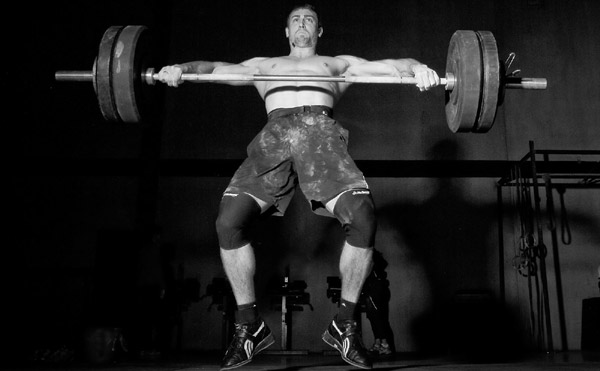
Standard men’s Olympic barbell are 20 kg and women’s barbells are 15 kg. Women’s bars are designed with smaller hands in mind, as the diameter of the bar shaft is 25 mm versus 28-29 mm found on a men’s bar. Buy whichever variation fits your hands best. That weight difference between the two is irrelevant in my opinion, as you can always slap more weight on a bar.
Knurling is another thing to consider. For Olympic lifts and Crossfit, you’ll probably want to avoid bars with center knurling. Center knurling is for powerlifting and if used for Crossfit it can cut you up pretty bad during high rep clean and jerks. Having said that, there are many good bars for CrossFit that have a passive center knurl, and passive is tolerable.
When shopping for a bar, look for a bar with a tensile strength of around 190,000 PSI. If the bar you’re interested in doesn’t make that specification available to you, then don’t buy that bar. Additionally, you’ll want either an end cap or snap ring sleeve design; don’t buy barbells with a hex bolt sticking out of the sleeve.
If any of these terms/specs confuse you, please read the top portion of this barbell guide.
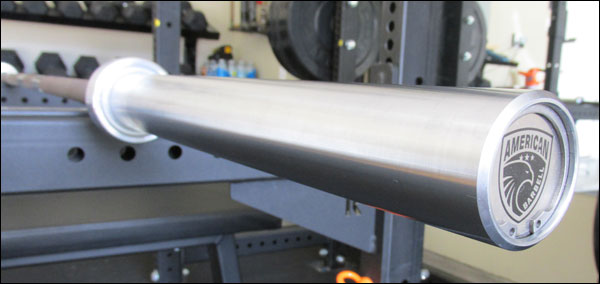
American Barbell has a large collection of barbells ranging from low-cost, multi-purpose, functional training bars like the California Bar, to premium and professional Olympic WL and powerlifting bars.
If you need any guidance choosing an Olympic bar, I have an entire barbell buying guide that outlines some of the best barbells for the money in many different categories and price ranges. Bars listed start at about $200 and include Olympic bars (including women’s bars), CrossFit bars, powerlifting bars, and youth bars. You can see that post here (new window).
Equipment Priority #2 – Bumper Plates
Next you’ll need weights for your new bar. Unless you’re an aspiring powerlifter, I suggest bumper plates rather than classic iron plates. Thanks to the CrossFit movement there is a lot of competition in the market where there wasn’t before and it’s lowered costs for bumper plates considerably, so there are many good deals to be had.
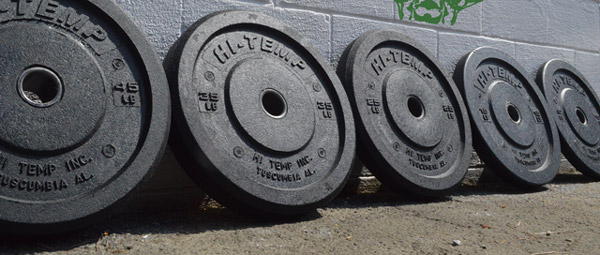
The most well-known black bumpers: HI-Temp bumper plates. American-made, resilient, super bouncy, and they can be used indoors and out.
Stick with reputable brands. Companies like Rogue, American Barbell, and Vulcan are the most common for home use and CrossFit boxes; with Vulcan being the front-runner when it comes to quality, performance, and price. High-end competition brands like Uesaka are great but they are the definition of overkill for non-commercial, home use – and the differences in price are not very subtle.
Buying bumper plates in sets is the most efficient way to buy weights, of course. The 160-lb set is the smallest available, and it includes a pair of 10’s, 25’s, and 45’s. If you do buy a set try to plan ahead. Don’t just buy what you can lift today or you may find that you’re ordering pairs sooner than you may like, and for more than you would have paid if you had bought a bigger set up front. Also don’t forget you won’t find bumpers for the 2½ and 5-lb varieties so you’ll have to get those separately in steel or as a rubber change plate package.
I have an article that gives prices and product information for a lot of different bumper plate brands. You can view that post here. I also have an article that gives prices on bumper sets so you can get an idea of who has the best prices on various sets.
Equipment Priority #3 – Pull-Up Bar / Power Rack
You can get set up with a pull-up bar a couple different ways. You can buy (or build) a wall-mounted or ceiling-mounted pull-up bar, you can buy a squat stand with pull-up bar, or you can buy a power rack. If you can afford it I recommend going with a power rack. When you have a rack, there is no lift that you cannot safely perform in your garage gym. You can go heavy on bench press, back squats, rack pulls – the list goes on. Power racks ftw.
However you end up doing it, you will need somewhere to do those pull-ups, chin-ups, and kips. This is big deal for CrossFit, and should be a big deal in any training program that you decide to do now or in the future. Training your lats is important and a pull-bar is the simple way to get that done. A pull-up rig may also be a great place for you to hang your gymnastic rings.
You can DIY a pull-up bar, but honestly they aren’t that expensive and at least you’d never have to second guess the stability of it. You can purchase pull-up bars, squat stands, and racks just about anywhere that sells equipment. Rogue has the biggest selection by far, but you already know that I’m guessing.
For help choosing a power rack check out my power rack buying guide.
Equipment Recommendation #4 – Jump Rope and/or Battle Rope
For those prescribed double unders you’re going to need a jump rope. Hell, double unders or not, everyone should own a jump rope. Fortunately, I’m certain that everyone can afford a jump rope! Matter of fact, you probably already have one! If not, spend $12 and you can get a cheap one. Spend $22 and get a good speed rope. Either way, very inexpensive.
Battle ropes are an another options; an optional items if you will. A lot of gyms and boxes have battle ropes since they fit perfectly into a high intensity workout program like CrossFit. I personally think that a battle rope offers one of the most intense cardio workouts you can do anywhere.Equipment Recommendation # 5 – Gymnastic Rings
Another must for a CrossFit gym, gymnastic rings are great for upper body strength. You’ll need rings for muscle ups, front levers, ring dips, ring rows, and various other movements. Rings can be made of wood, plastic, or metal; it’s all about your personal preference. Rings are an inexpensive piece of equipment so there is no reason not to own a pair.
Interesting fact, Rogue’s very first manufactured product was the metal Rogue rings. That was only 8 years ago and look at them now. Nuts, right?
Equipment Suggestion #6 – Kettlebells
Kettlebells are a big part of CrossFit programming. You’re going to want a small selection of kettlebells for your gym so you can swing, snatch, and clean. A full set of kettlebells can be expensive, but you shouldn’t need too many at first (or ever). Pick up a couple of kettlebells that you’re comfortable with and then add more as you get stronger.
A couple things to look for when picking out kettlebells would be to make sure they are not coated with an epoxy (as they will flake and chip), and to make sure there is no molding or casting seam on the handle. Some cheaper kettles have this seam on the underside of the handle and it will destroy your hands. Additionally, some have larger handle openings than others so if you are a big guy, take that into consideration as well.
Rogue’s kettlebells have no seam and they also have a resilient powder coat finish. Vulcan Strength has some of the best kettlebells around, both for training and competition style.You might be able to find kettlebells used on Craigslist in which case you should see some major savings. Just check for those drawbacks listed above. They’re no good at any price if you can’t use them.
Equipment Suggestion #7 – Plyometric Box
I love versatile equipment that doesn’t cost a lot of money, and plyoboxes are one of those items. You can even DIY these if your budget is really tight (or you just like to make things).
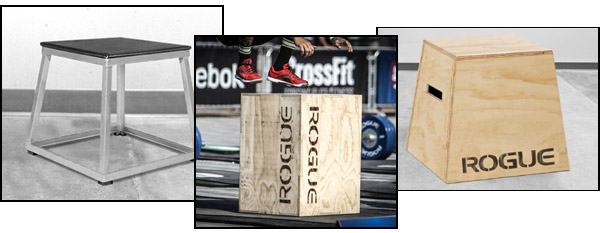 Plyo boxes are available in many varieties: wood, foam, metal, adjustable, angled, and so on – and heights vary from 12″ to 30″. Use them for box jumps, step ups, or even for box squats. This is another item you can buy practically anywhere.
Plyo boxes are available in many varieties: wood, foam, metal, adjustable, angled, and so on – and heights vary from 12″ to 30″. Use them for box jumps, step ups, or even for box squats. This is another item you can buy practically anywhere.
There are also countless DIY projects available on the web, but like the pull-up bar they are so inexpensive to buy that it hardly seems worth spending half a day on it just to save $20 – and that’s if you already have all the right tools.
Recommended Equipment #8 – Medicine Ball / Slam Ball
Med balls have many uses but mostly they’re used for wallballs. They can also be used for cleans, push-ups, weighted core exercises like the plank, or tossing to a friend. If you have a Rogue rack, you can even buy a wallball target that attaches right to the rack. Slam balls are another option if you want a ball with a dead bounce that won’t fall apart.
Dynamax is the go-to brand for medicine balls. They are the brand you’ll see the athletes use during the Crossfit Games. They are expensive but they’ll last a while.
Equipment Suggestion #9 – Utility/Weight Bench
While not usually a priority for CrossFit or WODs, you should pick up a flat utility bench at some point. There are numerous exercises you can do with a bench especially if you own a power rack (bench press comes to mind here.) There are also ab workouts, skull crushers, dumbbell rows, pull overs, seated shoulder press, and the list goes on.
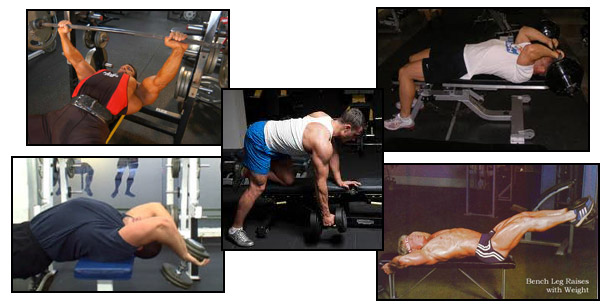
Most people won’t really need an adjustable incline bench, so a flat utility bench should be fine. I personally dropped some decent money on an adjustable incline because I enjoy the incline bench press and I wanted to be able to do heavy military presses in my rack. It’s just a matter of preference and budget.
A bench is one of those items that you can get away with being semi-thrifty. My best advise is look for a solid looking construction and high-density foam. I have a very thorough bench buying guide that will teach you exactly what to look for in a bench, and maybe even point you to the perfect bench for you.
Recommended Equipment #10 – Glute Ham Developer (GHD)
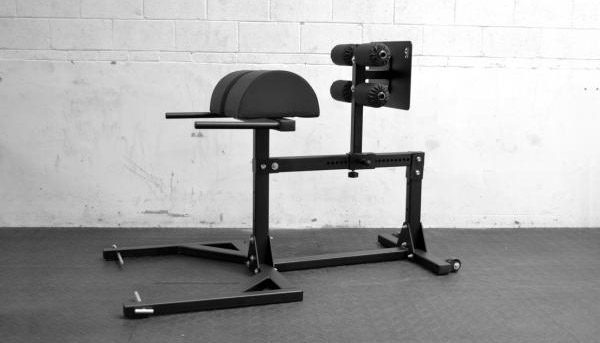
This is the Abrams Glute Ham Developer (GHD) by Rogue Fitness
As the name implies, the glute ham developer is a great piece of equipment for developing the glutes, hamstrings, core and lower back. Sadly most commercial gyms don’t own GHDs so a lot of people are unfamiliar with them. The most common exercises performed on the GHD are the glute ham raises and glute ham sit-ups. It is an amazing piece of equipment that should ultimately be considered for any gym.
I would say the GHD is a moderately expensive addition to a gym but one I do recommend. However, I wouldn’t buy it before you got set up with your bar, bumpers, and rack, as those items are a much higher priority. When it comes time to buy a GHD, take a look at Vulcan, Sorinex, and Rogue Fitness. Matter of fact, take a look at this guide on GHDs when you’re in the market.
Other Suggestions
Concept 2 Rower
Another popular equipment choice for Crossfitters is the Concept 2 Model D Rower. They have been around for many years but ever since they were used in the CrossFit Games they have kind of become a thing. I’ve used the Concept 2 rower numerous times and it’s an awesome piece of equipment. If you can afford one, grab one.
Parallettes
Parallettes are another small, inexpensive item popular with Crossfitters. You can buy steel versions for less than $90 or you can make your own out of PVC. A Google search will yield many instructional articles on DIY parallettes.
Related Posts
- Garage Gym Organization – Maximizing the Limited Space
- Olympic Barbell Specifications and Shopping Guide
- Bumper Plates Comparison and Shopping Guide
- GHD Shopping Guide
If you made it all the way down here, then this article couldn’t have been that bad, right? Please consider sharing and/or liking this article. Thanks!
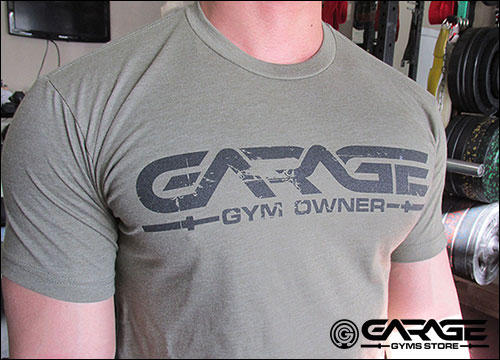

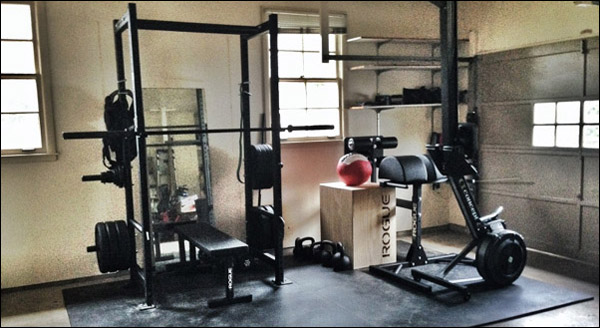
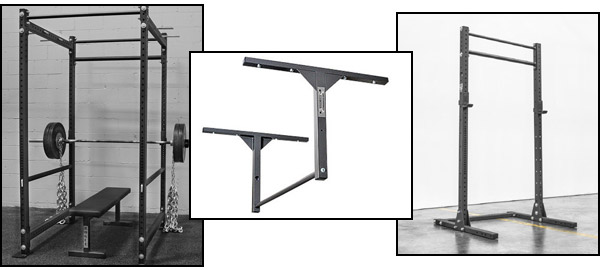
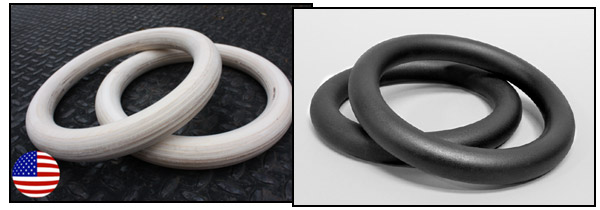
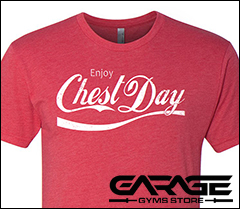
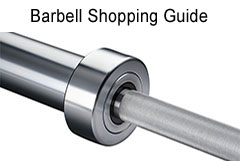
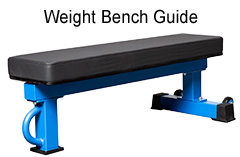
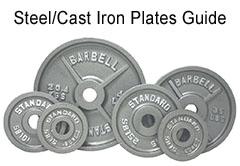
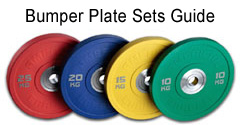
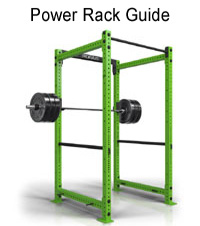
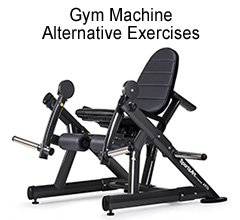

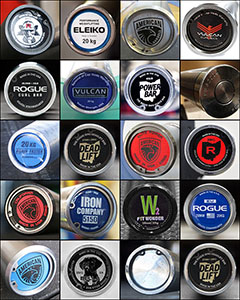

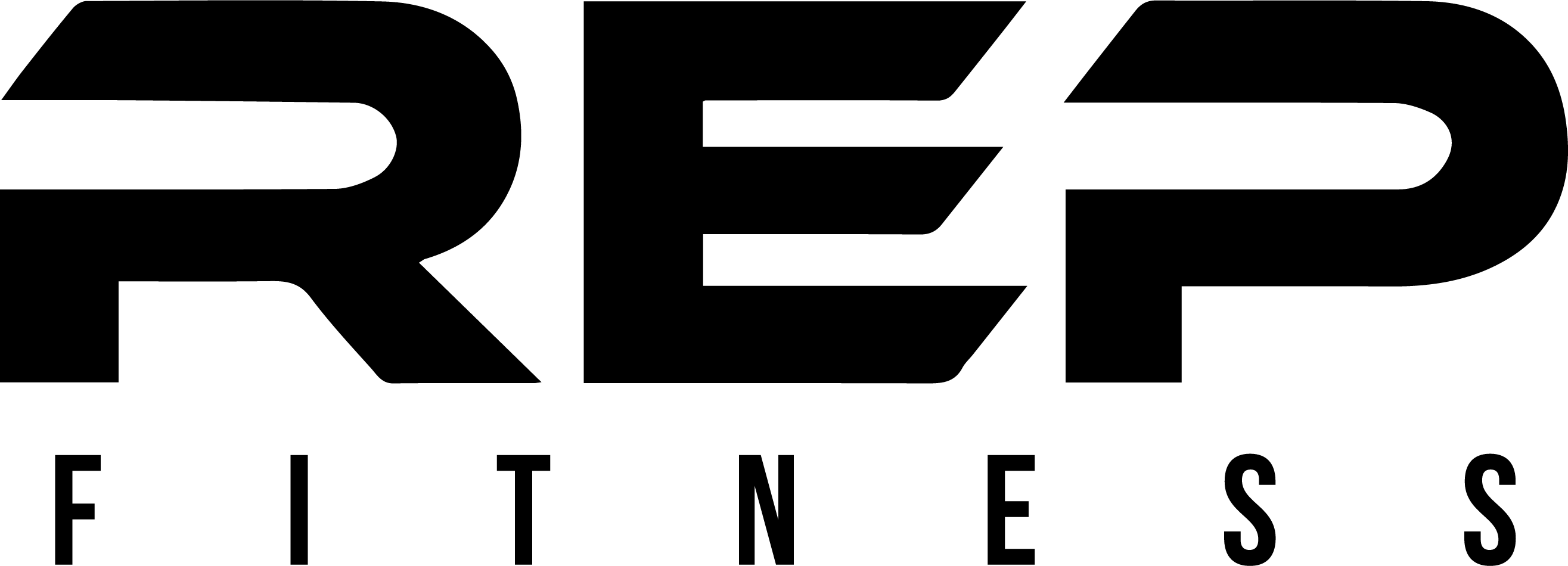
HEY!!! Who makes the freestanding pull up bar you have pictured above (its in the photo on the power rack/pull up bar section, but on the farthest right) that looks awesomely adjustable…. and maybe sturdy enough for muscle-ups?? Can it be set up with only one top bar?
That is the SML-2 Squat Stand from Rogue. Yes, it is offered with a single bar for the pull-up bar rather than the double bar that is shown. You can muscle up, but no kipping unless it’s bolted/weighted down. There’s a Rogue banner right above this. Once at Rogue, just start typing sml and you’ll see it pop up in the search field.
If you were to pick up one item, for weight training in at home (in a tight area) when hitting the gym is not an option, what would you choose? Something versatile.
What a question! That one thing would be a barbell assuming this tight space isn’t a closet.
Hello J, I noticed you didnt mention Dip station handles as part of the Rack or Squat Stand.
Yeah I didn’t go into accessory detail here. I did link to the power rack guide though, where I do talk about available accessories for the different racks to a degree. Almost any rack worth buying either has an optional dip station, or is built with steel tubing that is compatible with someone else’s; usually Rogue’s.
Not to mention that if you have rings, you don’t need a dip station.
Hey,
Do you know what kind of medicine ball he is using in the video? I can’t tell if it is hard rubber (with bounce) or a soft gel medicine ball. The dynamax variety strike me as too soft to do the push-up workouts, but I could be wrong…
It’s similar to this: http://amzn.to/1Y17DDq
Back in my Lifetime Fitness days, they had both Dyna style, and these firmer medicine balls that were appropriate for the push-ups and other things where you’re on the ball rather than holding the ball. Those balls in that link are like that, but I don’t know anything about the different brands of these style balls or if one brand is better than the other.
Hi John,
Needed your feedback on rowers and air bikes. I know that the Concept 2 rower and Assault Air Bike are the major players in this area but this company GetRx’d is offering an alternative for both and at a reduced price. Do you know anything about this company or these products? They both look legit and the few reviews that I’ve come across all seem to be somewhat impressive. Your thoughts would be appreciated. Thank you.
Rob
Yeah GetRx has had those two units for some time, though I still have not actually run into either the rower or bike. Their version of the air bike might be worth considering because it does look significantly less expensive, but I’d personally be very reluctant to stray away from Concept2 Model D rowers over a $50 savings. Concept2 is rowers are hassle free. The company is very established, has great service, and wearable parts are reasonably priced and super easy to get. Of course this isn’t even taking into account the refinement of their machines and how smooth they are to actually use. Yeah, I’m not saying the Get version isn’t decent or a value, but there is a reason Concept2’s are everywhere.
The best thing you could do is inquire with GetRx to see if they’ve provided those rowers (or bikes) to any gyms in your area and go test it out. They are mostly a CrossFit box supplier so there’s a pretty good chance they have.
Thanks for your feedback and thanks for the great info that is easily available here on your site. I know that you are extremely high on the Concept 2 and rightly so but I think that I’m going to take the plunge with the Get rower. The stats and videos that I’ve viewed look impressive and they are bundling it with some free items (wooden jump box and slam ball) and free shipping for $849. I will let you know how it turns out. I’m an against the establishment kind of guy and I am willing to give the lesser known guys an opportunity to prove their worth. I love the items I’ve gotten from Rogue but everyone shops there. But you know what, I’ve gotten bumpers and barbells from Vulcan that I absolutely love too. Again, I will give a review of the item after a few uses. Thank you again and keep up the excellent work.
Have you considered doing a rings comparison article or buying guide? I see a lot of options that mostly look the same, but it’s hard to tell what the quality of the rings (especially if wood) are and even harder to tell how the straps will hold up as far as quality and ease of use. Then there’s the onnit rings that have a lot of marketing about the strap design and they are way more expensive, and I have no idea if it’s a different product or just more expensive than the usual offerings.
I looked at the Onnit rings and straps. There is a lot of talk about them being better than other products, but there is literally nothing in the product description that explains WHY they are better. “Strong straps”, “wood rings”, etc. All very vague. Nothing against Onnit, seriously, but it sounds like hype until they get more specific.
You may already know this, but all straps are considered wearable. They should be inspected regularly and replaced at the first sign of fraying or other damage – regardless of source.
Also I think wood rings are typically birch. Most companies don’t mention what wood they use, but a few do – and since there doesn’t seem to be much coloration different among brands it leads me to believe they all use the same thing. Wood is still preferred over plastic and metal for indoors, but you can’t store wood outdoors so for an outside set-up that you don’t want to dismantle after each use, I’d go with plastic (for grip) or metal (for the feeling of substance or weight). Did you know Rogue’s first product was steel gymnastic rings? The more you know!
Hi, One question…is It good to open a garage box with 3.15meters height ? Can i have some problem with muscle up?
Thanks for replies!
(Sorry for My english …)
That distance is great for everything but muscle ups. If you had 7½ foot racks (~2.3m) that would leave you with almost 3-feet (~.9m) of space above the pull-up bar, which I guess would work for 90% of athletes, but that’s not a very tall rack. It depends on if this is a personal gym just for you and you aren’t overly tall, or if this is a gym for multiple athletes – in which case that seems kinda short. You don’t want short racks in a gym for multiple athletes – ideally anyway. But again, if this is just for you and you’re average height and don’t mind having a normal not-too-tall, not-too-short power rack, then you could make it work.
Curious question, if using bumper plates for deadlifts, is it necessary to have a deadlift platform or rubber mats to protect the concrete?